![]()
|
Index | Pottery | Pottery manufacturers | Josiah
Spode |
|
|
[Josiah
Spode] |
[Copeland
& Garrett] |
[W.
T. Copeland (& Sons)] |
[Spode
Ltd] |
Location and period of operation:
|
Spode & Tomlinson |
Stoke |
c.1767
|
1774 |
|
Spode & Mountford |
Shelton |
1772 |
c.1779 |
|
Josiah
Spode I & II |
Stoke |
1776 |
1833 |
| Earthenware,
porcelain and parian
ware at the Spode Works, Stoke,
Stoke-on-Trent, England. "Josiah Spode I was an extremely accomplished and innovative potter. He worked during the most exciting decades of Staffordshire pottery history and made not only the standard products of his day, but was also involved with the introduction of two products that profoundly changed the history of English ceramics: underglaze blue printing on earthenware and the perfection of bone china." Halfpenny Pat, Spode Exhibition Online [accessed 7 Sep 2025]
Josiah Spode of Lane Delph died, a pauper in 1739. He and his wife Ellen had four children, three daughters and one son. The son was also named Josiah and was born in 1733. It is
their son, later commonly
known as Josiah Spode I, who started the pottery business that would
continue the Spode name for over 250 years.
Josiah Spode I (b.1733 d.1797) 1749-1767 his apprentice and time as a manager
1767-1779 manufacturing in rented potworks:
1797-1827 the pottery business under control of Josiah Spode II:
The involvement of William Copeland:
|
Subsequently: Copeland & Garrett
![]() see more on
Spode and it's history
see more on
Spode and it's history
ownership of Spode
|
|
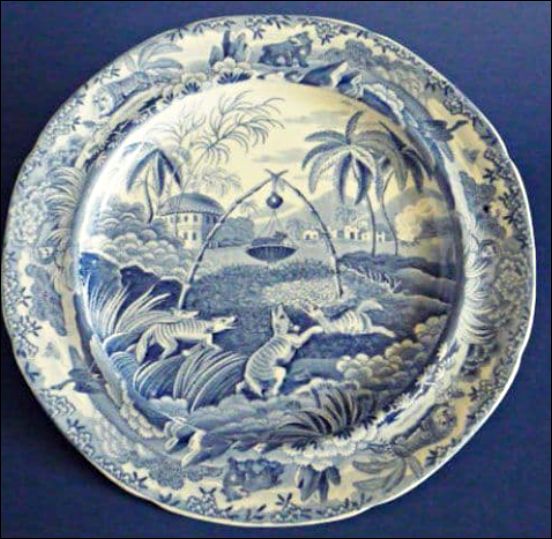 plate in the 'Common Wolf Trap' pattern |
impressed & printed |
photo acknowledgement: Premier Antiques
Spodes New Stone
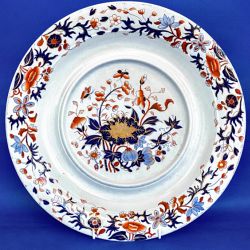
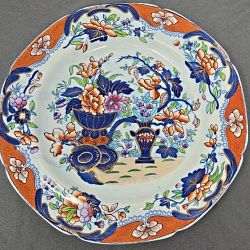
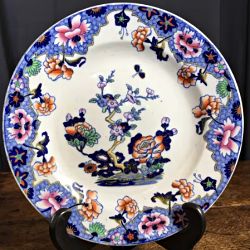
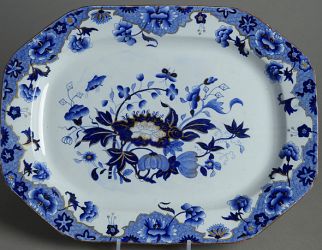
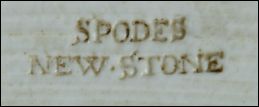
Marks used on ware for identification:
marks used by Spode from 1770 to 1833
'Spode & his successors' plate opposite p.192
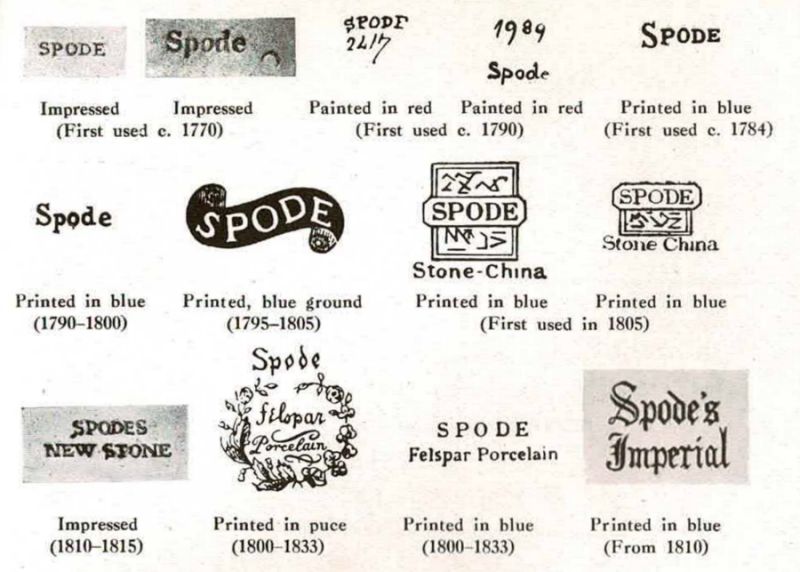
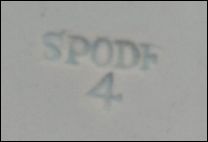
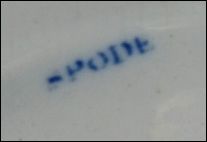
these two upper case marks were on
the same piece of ware
|
Copeland gives a date of 1815-33 "..it was used on all the bodies up to the end of the Spode period. It may be distinguished... by the serifs on the S. It is frequently found with numbers below it: these are thought to be clay-workers' marks" |
Stone-China marks
Spode introduced Stone China in either 1805 or more likely 1812/14
|
1805 Hayden says that "Spode produced stone china in 1805" p.150 and this is reflected in his chart of marks. (Spode & his Successors, 1925 p.192) Godden states that "Spode from c. 1805 manufactured this, or a very similar body, under the name "Stone China" or "New Stone" and for many years he produced fine dinner, desert, and tea services in this strong clean earthenware." (Encyclopaedia of British Pottery and Porcelain, 1966, 1980 p.xxiii) Godden differentiates between Stone-China marks printed in black, which he dates to c.1805-15 and those in blue which he dates to c.1815-30. (Encyclopaedia of British Pottery and Porcelain Marks, 1964, 1991 p.589)
1812/14 Copeland dates the Spode Stone-China mark as "about 1812-1833". (Spode & Copeland Marks, 1993 p.57) In contrast to his earlier publications, Godden reflects this later date and reference Copeland's book. (Guide to Ironstone, Stone & Granite Ware. 1999 p.326) Spode Exhibition Online supports a 1813 date (https://www.spodeceramics.com/pottery/ceramics/stone-china. Retrieved 2 Oct 2025) |
the Stone-China mark is the SPODE name, superimposed on a pseudo-Chinese seal mark.
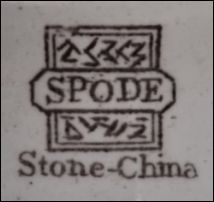
in black c. 1805-15 NOTE: This date is
almost |
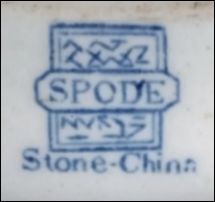
in blue c. 1815-30 |
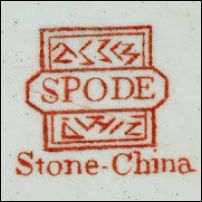
this Stone-China mark in red appears on "pagodas in situ at the Royal Pavilion, Brighton" |
'half mark' Copeland gives a date of about 1815-33 for this style of mark
|
|
|||
Spodes New Stone




|
Copeland gives a date of 1822-33 "Adopted when a new formula for Stone China was introduced about 1821-2" |
Potter to the Prince of Wales
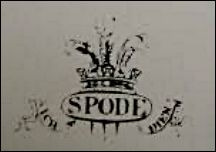
1806-1820
|
Spode was appointed 'Potter to the Prince of Wales' (later King George IV) in 1806, and used a special backstamp incorporating the Prince's three feathers and motto 'Ich Dien" and the Spode name. This mark ceased to be used in 1820 when King George ascended to the throne and Spode became 'Potter to H. M. King George IV'. It is uncertain if use of this mark was restricted to ware produced specifically for the Prince.
|
Questions, comments, contributions? email: Steve Birks
|
Hayden A (1925) 'Spode & his successors, a history of the pottery, Stoke-on-Trent 1765-1865', Castle & Company Ltd. Copeland, Robert (1993) 'Spode & Copeland Marks and other relevant Intelligence' Studio Vista, London. Spode History Online [online]. Available at https://spodeceramics.com, (accessed 7 Sep 2025)
|
|
Page created 3 May 2009 Updated: 6 Jun 2023 - entry expanded to give details of subsequent owners. Updated: 1 Oct 2025 - added: introduction, ownership dates, examples of marks |